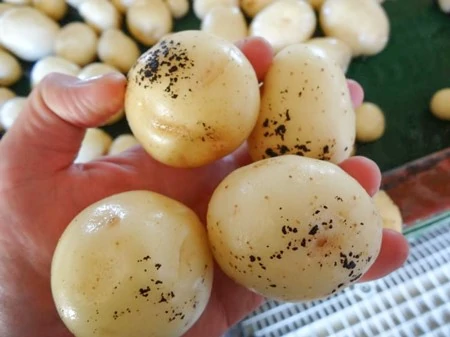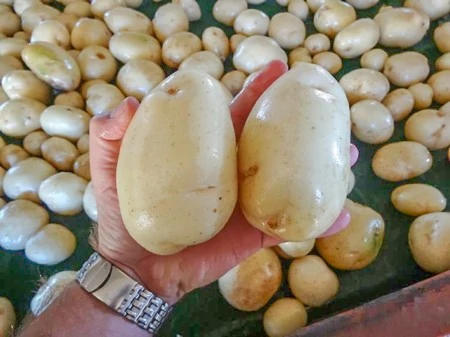The total potato hectares planted in South African during the past 5 years have fluctuated between 52 000 and 55 000 hectares with an average yearly production of approximately 265 million 10 kg bags/pockets. This was produced by 497 commercial potato growers and in 2019 the total consumption of potatoes (fresh and processed) was almost 40 kg per capita. The industry information above was provided by Potato South Africa (A non-profit company who serve as the mouthpiece of SA potato producers). Potatoes are susceptible to many fungal and bacterial diseases and therefore ensuring root and tuber health is crucial during potato production. Examples of fungal diseases are Rhizoctonia, Early blight, late blight and Powdery scab. Main bacterial diseases include Bacterial black leg, Bacterial soft rot (both caused by Pectobacterium spp.) and Common scab.

Commercial Agriculture Lead, Agricultural Biospecialist
at Andermatt Madumbi, South Africa
Andermatt Madumbi has evaluated the combination of T-Gro (Trichoderma asperellum), AmyProtec 42 (Bacillus velezensis) and V12 Initiate (balanced nutrition for early growth phases) for root and plant health on commercially produced potatoes.
T-Gro contains Trichoderma asperellum, produced by Andermatt Plant Health Products and it is associated with larger, healthier and more effective root systems.
AmyProtec 42 (manufactured by ABiTEP GmbH) is a highly concentrated liquid formulation of the beneficial bacterium Bacillus amyloliquefaciens. This bacterium forms a close symbiotic relationship with plant roots improving general root health and root development. It is registered in South Africa for the reduction of Bacterial black leg and Bacterial soft rot on potatoes.
V12 Initiate is a well-balanced product to support rapid growth during the early stages. It contains kelp, fulvic acid as well as micronized gypsum and diatomaceous earth resulting in slow release of Calcium, Silica and Sulphur.
The application strategy on potatoes is as follow:
- V12 Initiate is applied at a rate of 5 kg per ha. It can be applied in-furrow during planting or via the irrigation directly after planting.
- AmyProtec 42 is applied at a rate of 500ml per ha during planting. It can be applied in-furrow (tank mixed with V12 Initiate) or via the irrigation system.
- 500 g T-Gro is applied 2 weeks after the V12 Initiate/AmyProtec 42 application. T-Gro can be applied via the irrigation system or conventional spraying equipment. Ensure that it is washed into the rootzone within 8 hours of foliar application.
- T-Gro follow up applications may be necessary when combating high levels of soil pathogens. Apply 250 g T-Gro per ha during week 6 and week 10 after planting.
- For additional root health support and disease suppression a second application of 500 ml per ha AmyProtec 42 can be applied 4 weeks after planting.
Figures 1 and 2 below show the visual differences observed in a commercial potato trial where half a pivot was treated with the grower’s standard program and the other half of the irrigation pivot was treated with the Andermatt Madumbi program.
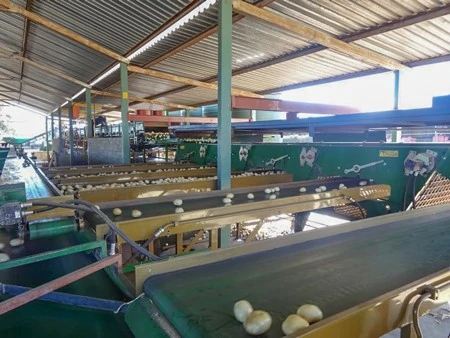
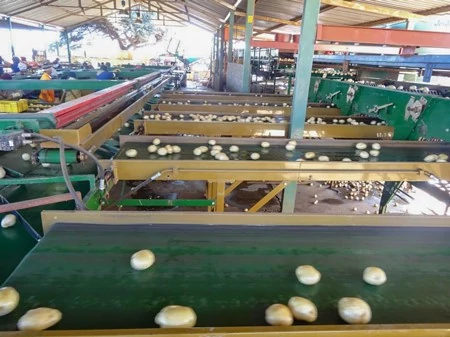
Comparison of the producer’s standard potato program (Fig. 1) with the Andermatt Madumbi potato guideline (Fig. 2) showed significant differences. Size distribution with the standard program had many extra small, small and medium potatoes (From back to front, conveyer belts one to three in Fig 1.). The Andermatt Madumbi guideline had less extra small, small and medium potatoes and more medium/large and large potatoes (From back to front, conveyer belts four and five in Fig. 2).
Figure 3 and 4 show the difference in disease presence (Rhizoctonia) in the 2 strategies. Overall, the AM guideline had less disease incidence.
Figure 3: Rhizoctonia in standard program Figure 4: Andermatt Madumbi guideline
The benefits following the Andermatt Madumbi potato guideline include:
- healthier root systems,
- larger and more uniform potatoes,
- better quality potatoes (due to suppression of various potato diseases)
- an increase in yield.
Above mentioned benefits were demonstrated in another commercial trial when the root health strategy was compared to a standard program (A 30 ha irrigation pivot was divided into two 15 ha trial blocks).
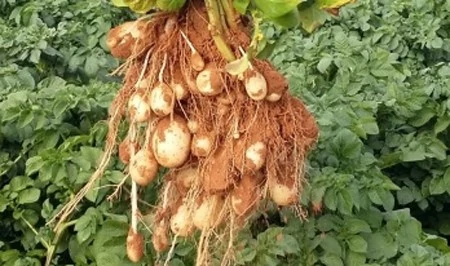
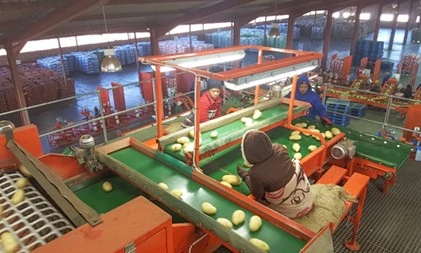
Figure 7 shows that the average sizing (after processing in the packhouse) improved for the area treated with the Andermatt Madumbi guideline. This area produced less extra small and small potatoes and significantly more medium and large potatoes compared to the standard program.
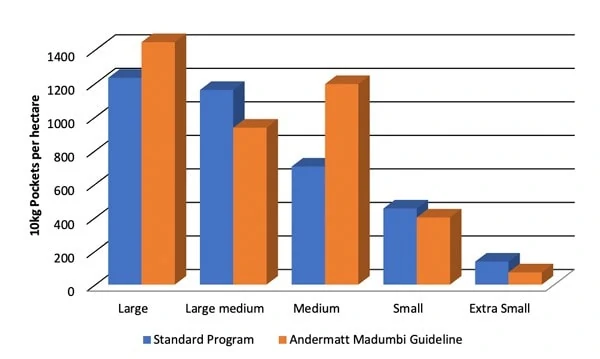
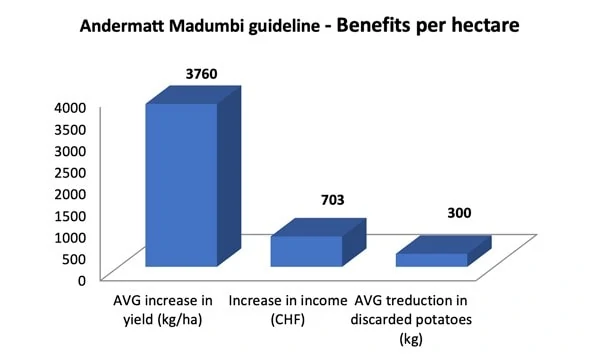
Due to disease suppression and overall increased plant health, potato yield increased by an average of 3760 kg/ha, revenue increased by CHF 370/ha (1 CHF = R15.39) and discarded potatoes were reduced from an average of 58 to 28 ten kilogram pockets/ha (A reduction of 30 × 10 kg pockets per ha, refer Fig. 8).
Registration and commercial trials have shown that the Root Health strategy on potatoes is effective, resulting in the increase of not only quantity but also the quality of potatoes and therefore a positive return on investment.
